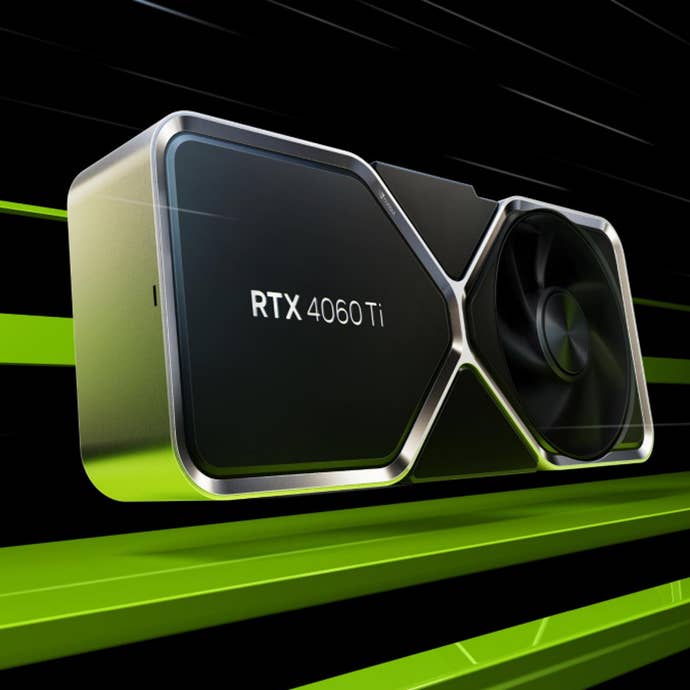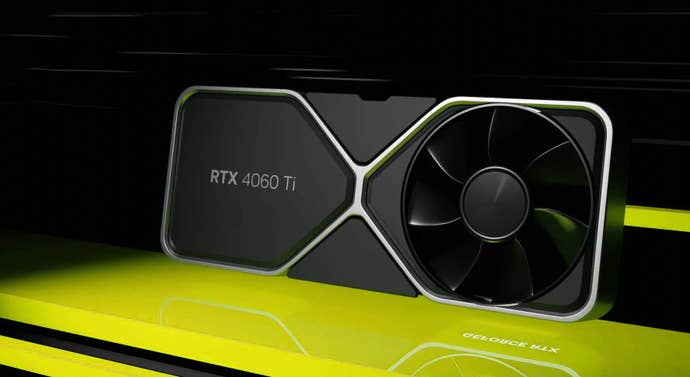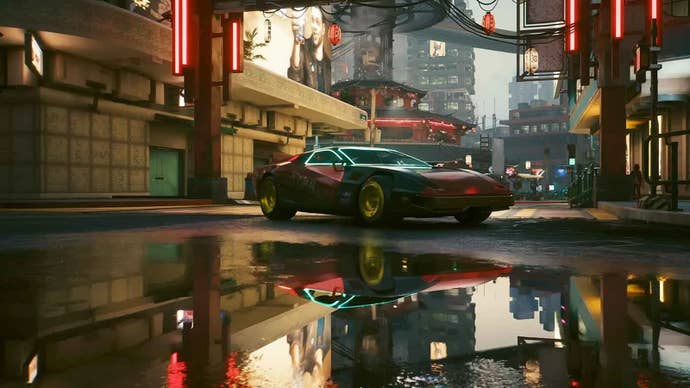[ad_1]
With the GeForce RTX 4060Ti 8GB, Nvidia has a clear audience and a clear goal in mind. We all like to make a great song and dance on top of the biggest, heaviest next-gen graphics cards, but the truth is, most people don’t buy them.
Take a look at the steam hardware survey and you’ll see that story: right now the most popular GPU on Steam is still the nvidia geforce gtx 1650, followed by the 1060. Of all the cards from the previous two generations, the ones topping the charts are the RTX 3060 and 2060. There’s a pattern emerging, see? Those entry level cards are important.
Nvidia’s own data backs this up. The company collects data on how people use its cards and software, and estimates that 77% of PC gamers still run at 1080p or lower. While on console 4K is becoming more ubiquitous, as when you buy a new TV for the living room you tend to buy high spec, it can be hard to justify an expensive 4K and Gsync compatible display for your den of gaming goblins. of pc. The numbers back it all up.
In that sense, this makes the 4060 Ti one of Nvidia’s top cards of this generation of hardware, and it’s designed to directly provide an upgrade path for similar cards from previous generations. There are three variants, with the 8GB 4060 Ti available now for $399, followed by a 16GB variation for around $499 in July. Finally, we’ll also get a non-Ti 4060, probably in July as well.
I’ve been working with the 8GB version of Nvidia’s Founders Edition 4060 Ti for a little over a week now, and my feelings on it are…complicated. In some ways, this card is still a marvel that demonstrates the true strengths of this generation of GPUs. In others, it’s a disappointment and even a small slap in the face for consumers.

The most impressive thing about the 4060 Ti is something it has in common with the rest of the 40 series, and something I’ve emphasized in almost every Nvidia GPU article this generation: its power consumption. The 40 series cards are alarmingly more efficient than their 30 series predecessors, and that continues here. In fact, I think this element of the GPU arms race is underestimated, but in a cost of living crisis where running powerful gaming hardware can inadvertently become expensive over time, making one of the pieces of a PC that consumes more energy is more efficient is a great help. – and such is the case here.
The good news continues whenever Nvidia’s exclusive and integrated technology is invoked. DLSS is a game-changing technology for video games, and it’s no longer a theory or a good idea: it’s real, it’s here to stay, and in my opinion, it’s a must. If a game has it available, you turn it on.
On weaker cards, DLSS capability is arguably more important. DLSS uses AI and the unique architecture of RTX cards to render games at a lower resolution and then upscale them so they’re virtually indistinguishable from higher-resolution native rendering. On a 4090, this helps you push a ray-traced 4K game at over 60fps; maybe even 120fps. But on an entry-level card like the 4060 Ti, the goal is more modest, like getting a cutting-edge game running at a rock-solid frame rate, even with ray tracing increasing the rendering load significantly. .
Basically, the DLSS value proposition changes at this level. It’s not about going over the red line, it’s about keeping things running smooth, reliable and manageable.

For example, I tested Cyberpunk 2077’s ray tracing suite, including RT Overdrive, with the 4060 Ti. Such a thing would have been unthinkable on previous hardware generations, but on this card it’s possible. With DLSS 3 enabled on my favorite setup (which includes Ultra RT), it will deliver a great experience that exceeds 60fps at 1080p and gets dangerously close to 60fps at 1440p. For comparison’s sake, this is a very neat improvement over previous generations: over 75% over the RTX 2060 Super, and a more modest 10-15% improvement over its direct predecessor, the 3060. You.
Cyberpunk is a prominent example, probably the biggest graphics powerhouse on PC right now, Crysis of this generation. But you can repeat this type of test with other DLSS3-enabled VG247 test favorites such as Forza Horizon 5 and Hitman, and the results are generally similar. But when you get to the raw, unassisted rendering, basic rasterization, this card starts to have a hard time justifying its place a bit more.
Here are the brass tacks: at 1080, you’ll enjoy a modest improvement; in most games between 10% and 20%. Sometimes it can go down a bit, sometimes higher. But it’s all just… a little flat. Since the RTX series made its debut with the 20 series, we’ve gotten used to impressive generation leaps, and this isn’t really that. There’s no ‘wow’ factor here, it’s belt and brace stuff, as far as an upgrade goes.
Even in RTX’s poster child Cyberpunk, the story resonates; It’s solid performance for the price range and a decent way to play a demanding game with the 40-series-exclusive DLSS 3, but turn it off and you’ll see a generational jump over the 3060 Ti of less than 10%.
And all this brings us, of course, to the price. Nvidia wants to point out that generationally this hasn’t seen a price increase. However, it also hasn’t had the performance boost I’d expect across the board given that it’s a generational change. At a lower price, or perhaps at this price but with 16GB of memory instead of this 8GB, this card would be a much easier recommendation.

As it stands, consideration of this purchase should be strongly advised. How many games you want to play support DLSS? And perhaps more importantly, can you afford to wait for a new generation or save up to buy one of the more impressive cards that also supports that technology? I can see the market and I can see the interest, but I pretty much do it through gritted teeth.
More than anything, the RTX 4060 Ti and the kick it got in the media last week underscore where the current GPU market stands. AMD isn’t really competing, and Nvidia, with a high level of enthusiasm for AI and a rising enterprise value, doesn’t seem overly concerned with leading the way. That leads to a card like this: functional, but flat, and ultimately unexciting. Hopefully the base 4060 provides better value.
[ad_2]